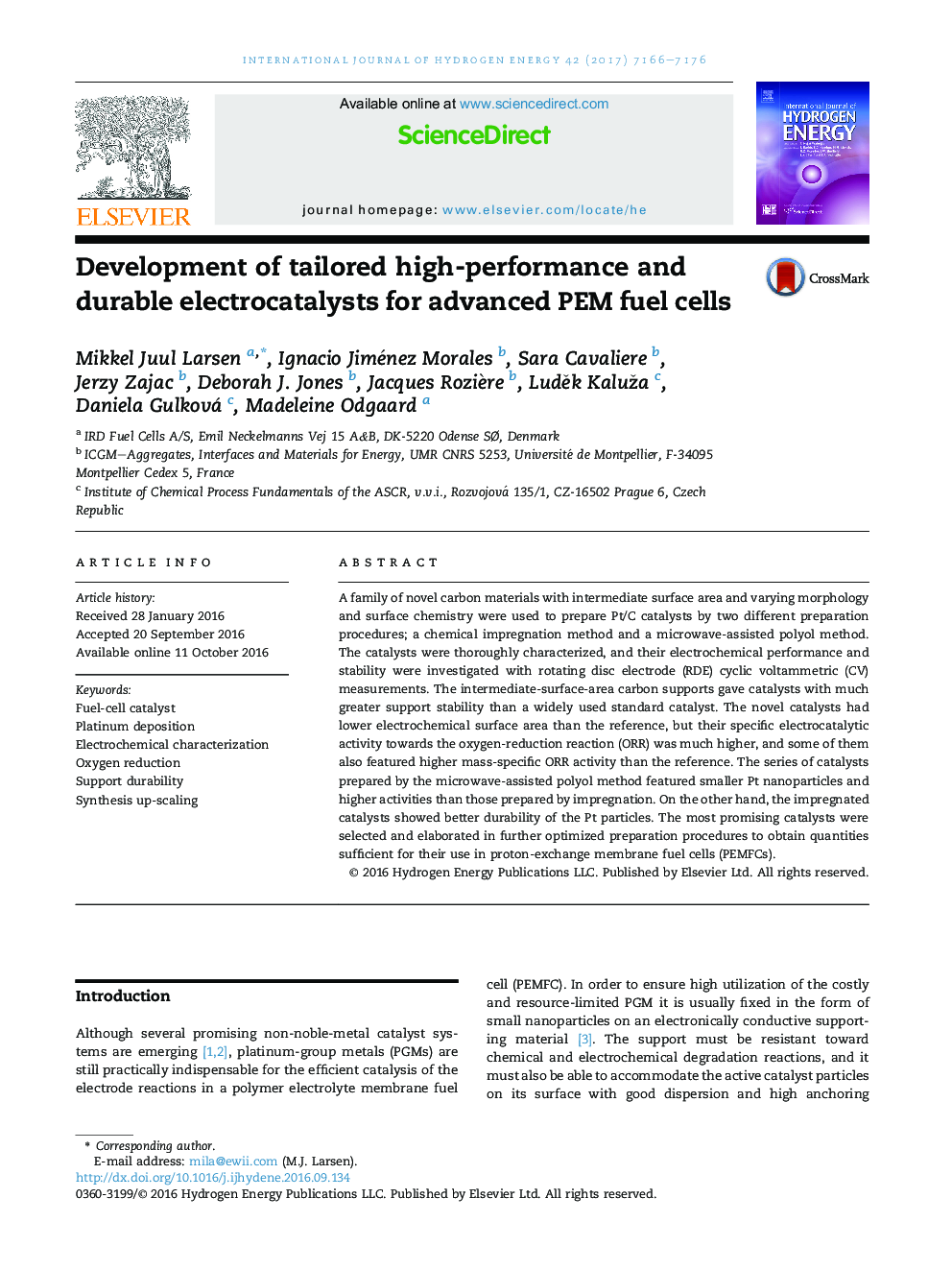| Article ID | Journal | Published Year | Pages | File Type |
|---|---|---|---|---|
| 5146155 | International Journal of Hydrogen Energy | 2017 | 11 Pages |
â¢Carbons with intermediate surface area are durable Pt-electrocatalyst supports.â¢High-Pt-loading catalysts were successfully synthesized by two methods and up-scaled.â¢Microwave-assisted polyol method gives great Pt dispersion and homogeneity.â¢Chemical impregnation method gives very durable catalysts.â¢Down-selected catalysts show excellent electrochemical performance, exceeding reference.
A family of novel carbon materials with intermediate surface area and varying morphology and surface chemistry were used to prepare Pt/C catalysts by two different preparation procedures; a chemical impregnation method and a microwave-assisted polyol method. The catalysts were thoroughly characterized, and their electrochemical performance and stability were investigated with rotating disc electrode (RDE) cyclic voltammetric (CV) measurements. The intermediate-surface-area carbon supports gave catalysts with much greater support stability than a widely used standard catalyst. The novel catalysts had lower electrochemical surface area than the reference, but their specific electrocatalytic activity towards the oxygen-reduction reaction (ORR) was much higher, and some of them also featured higher mass-specific ORR activity than the reference. The series of catalysts prepared by the microwave-assisted polyol method featured smaller Pt nanoparticles and higher activities than those prepared by impregnation. On the other hand, the impregnated catalysts showed better durability of the Pt particles. The most promising catalysts were selected and elaborated in further optimized preparation procedures to obtain quantities sufficient for their use in proton-exchange membrane fuel cells (PEMFCs).
